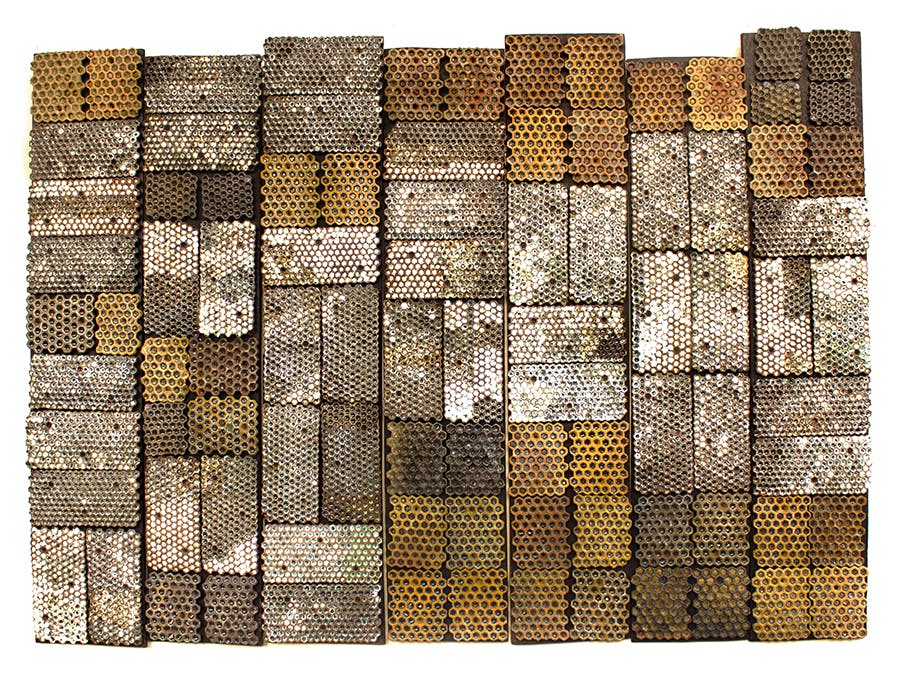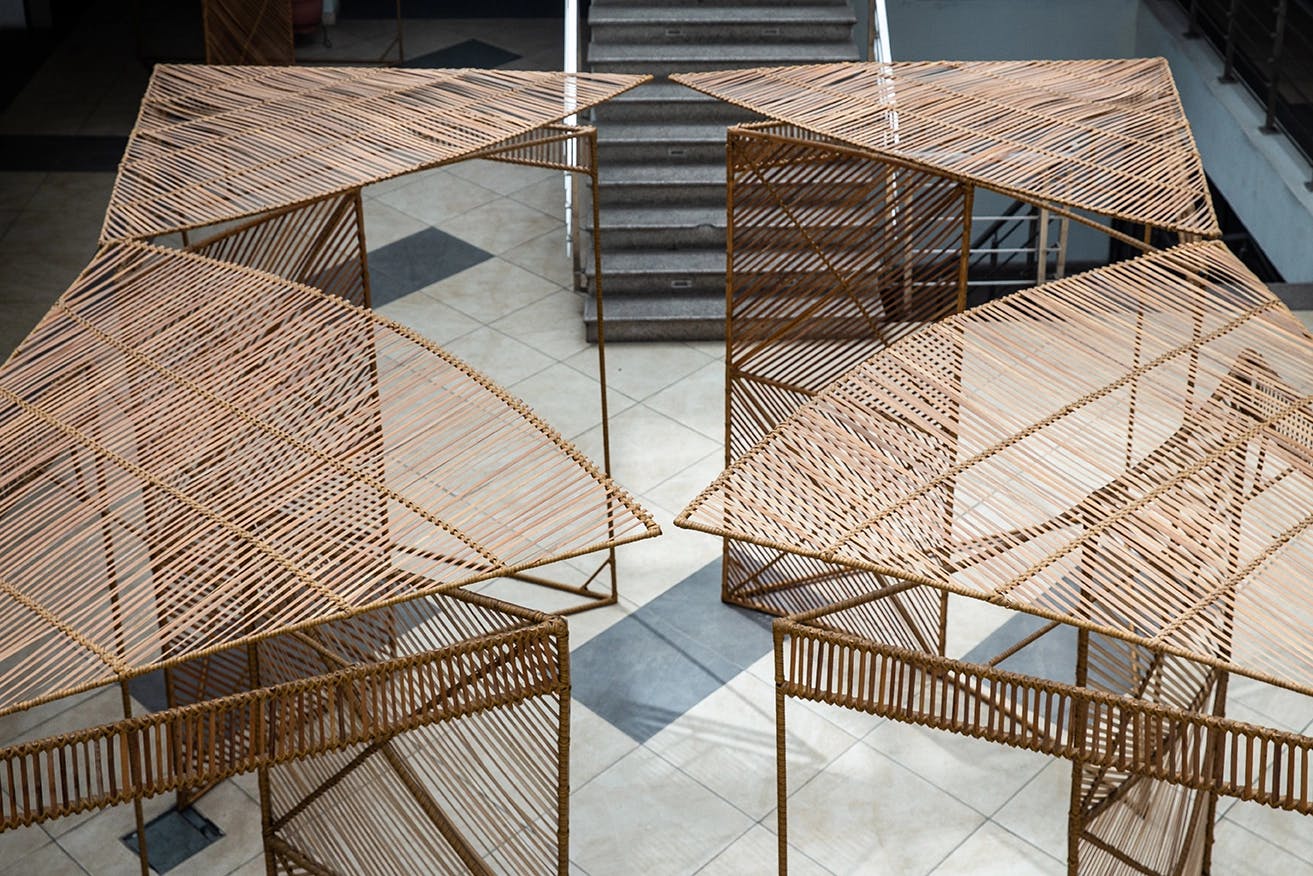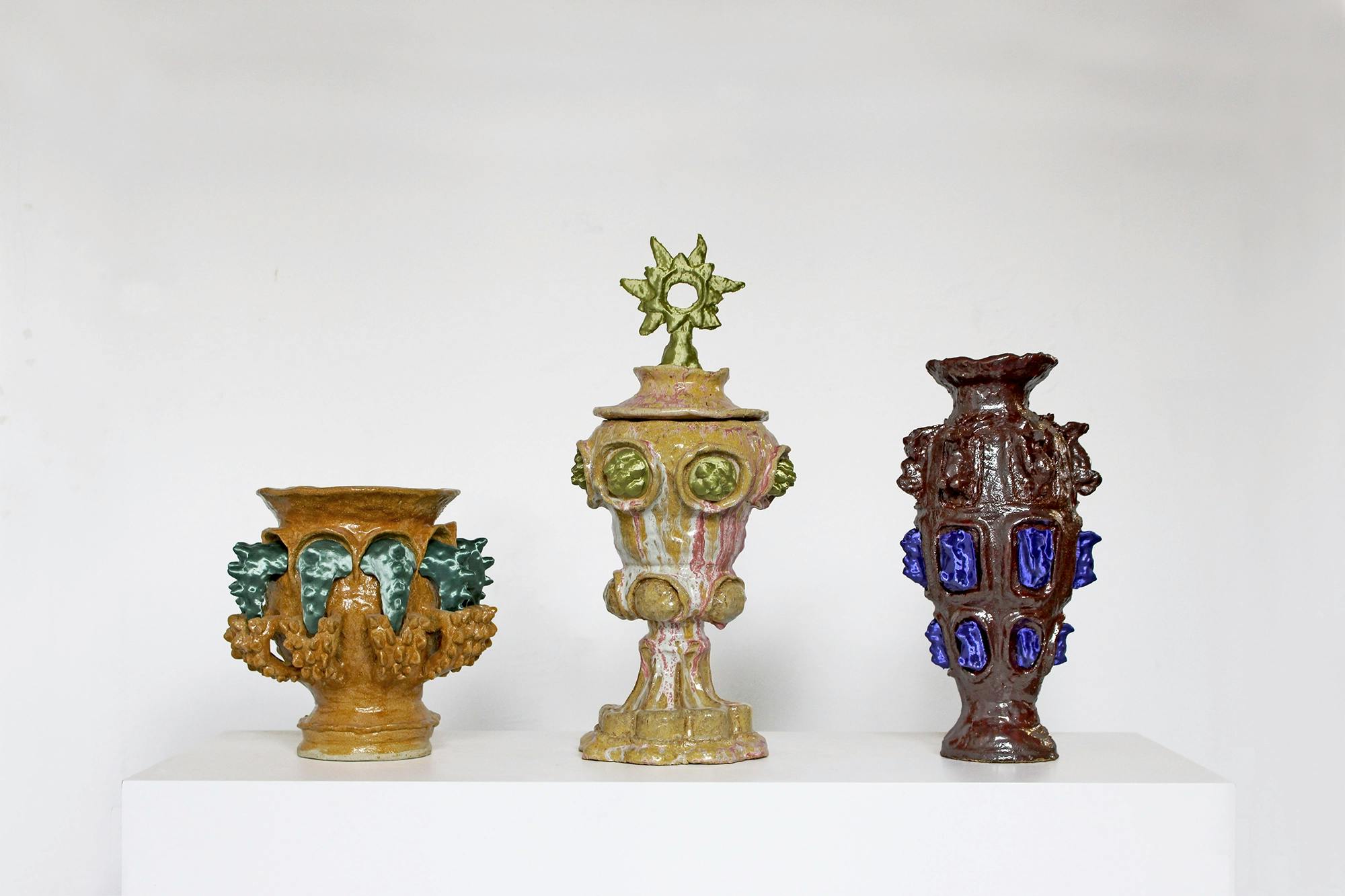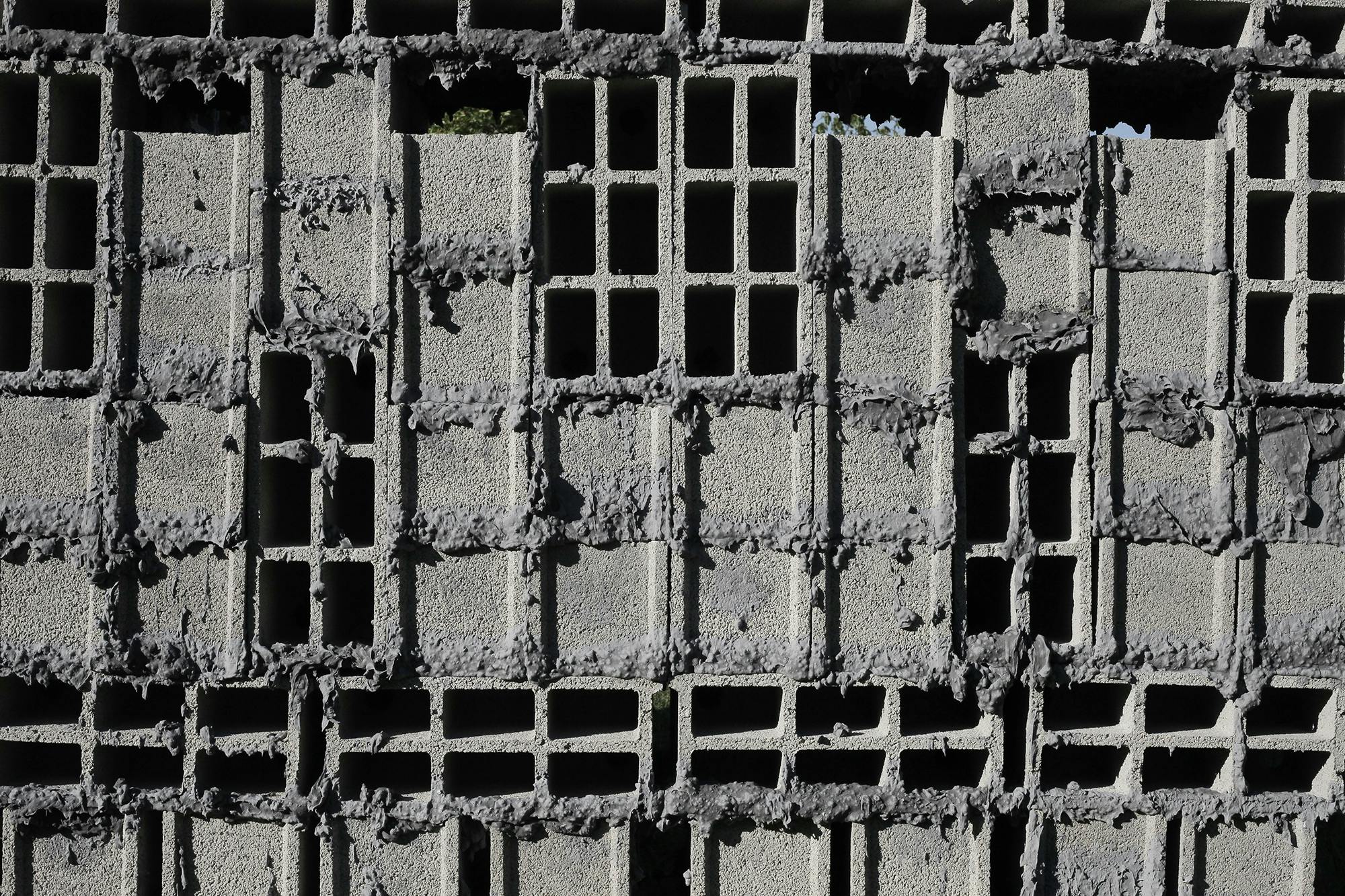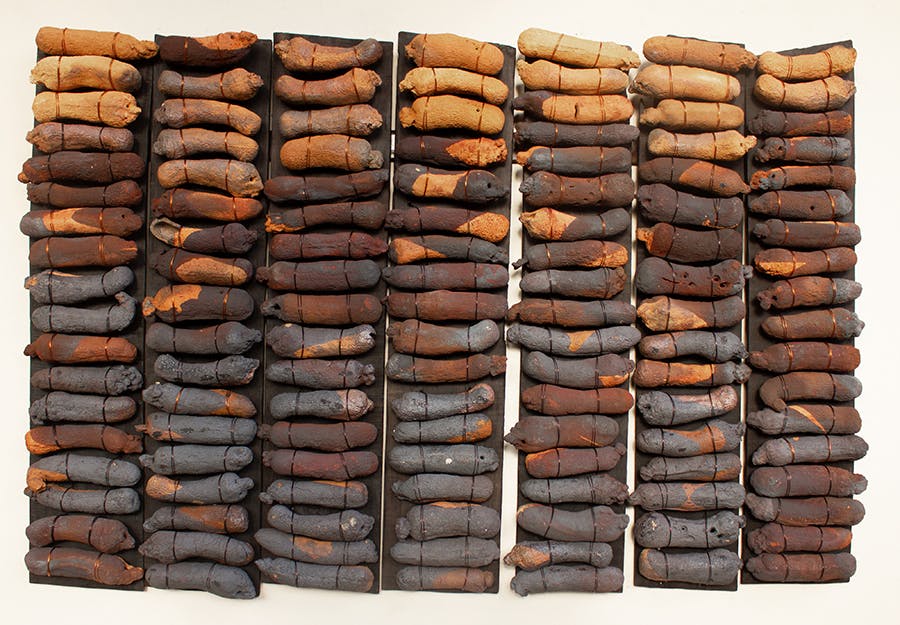
Ozioma Onuzulike
Nigerian ceramicist Ozioma Onuzulike creates large-scale works resembling tapestries, meticulously crafted from thousands of ceramic palm kernel beads and natural palm kernel shells, that serve as metaphors for the historical and sociological roots of turmoil in Africa.

Ozioma Onuzulike’s large-scale ceramic works, resembling tapestries, are meticulously crafted from thousands of ceramic palm kernel beads and natural palm kernel shells. He explores the aesthetic and symbolic nature of clay-working, adopting a laborious process to achieve unique colors and textures in the clay, oxides, and glazes. Each ceramic undergoes bisque-firing and is dipped into ash glazes before being adorned with recycled glass. The pieces are woven with copper wire and allude to the West African textile traditions of Akwete, Aso Oke, and Kente. Inspired by the organic forms of palm shells, yams, and honeycombs, Onuzulike’s works serve as metaphors for the historical and sociological roots of turmoil in Africa. Ozioma Onuzulike graduated with First Class honors from the Department of Fine and Applied Arts, University of Nigeria, Nsukka, where he now serves as the Director of the Institute of African Studies. His work is in the permanent collection of the Museum of Anthropology and Archeology, University of Cambridge; Princeton University Art Museum; the Wellin Museum of Art at Hamilton College; Crocker Art Museum; Hudson Valley Museum of Contemporary Art, New York; and the Yemisi Shyllon Museum of Art, Lagos. His studio is based in Nsukka, Nigeria.
